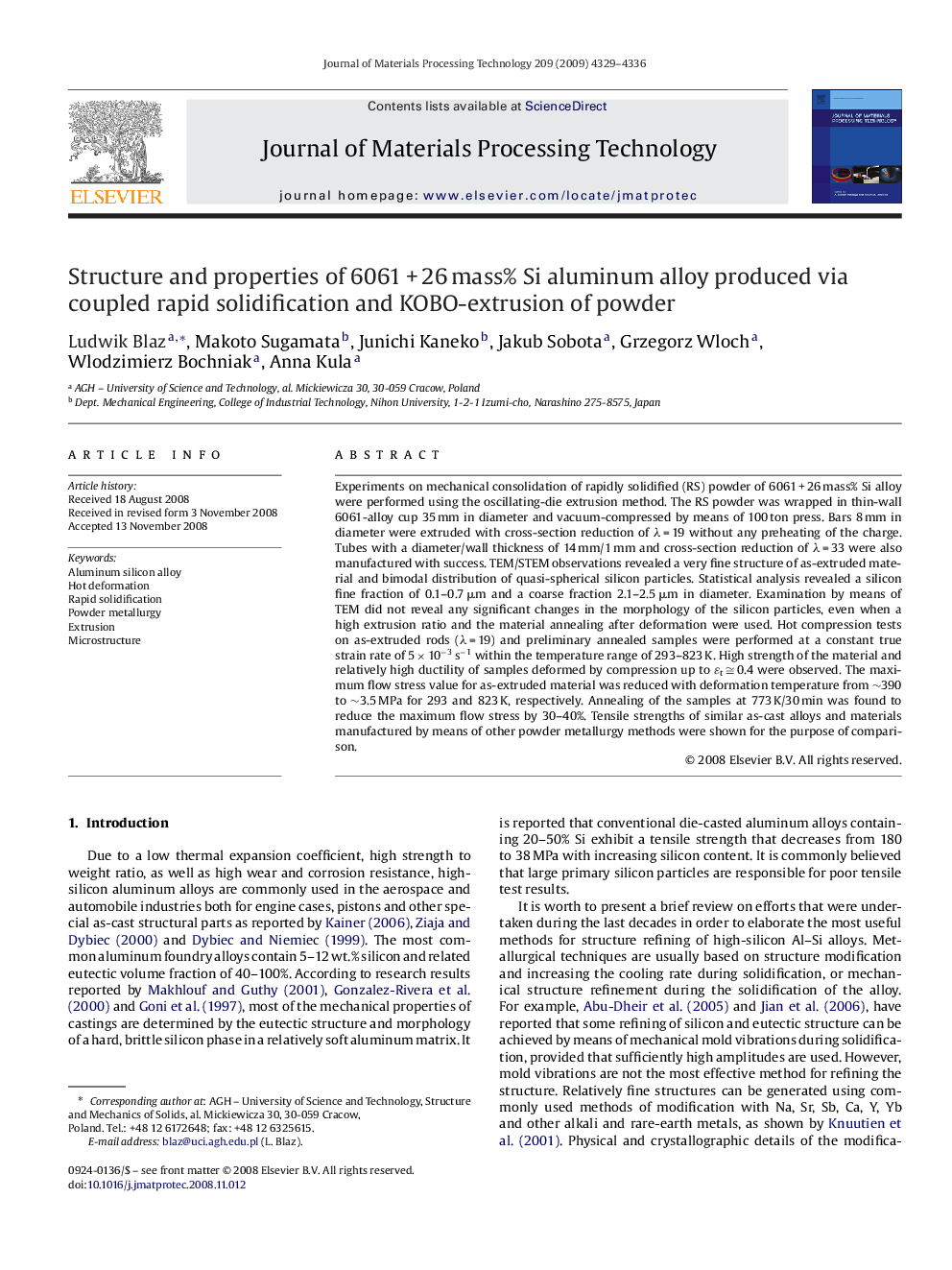| Article ID | Journal | Published Year | Pages | File Type |
|---|---|---|---|---|
| 793439 | Journal of Materials Processing Technology | 2009 | 8 Pages |
Experiments on mechanical consolidation of rapidly solidified (RS) powder of 6061 + 26 mass% Si alloy were performed using the oscillating-die extrusion method. The RS powder was wrapped in thin-wall 6061-alloy cup 35 mm in diameter and vacuum-compressed by means of 100 ton press. Bars 8 mm in diameter were extruded with cross-section reduction of λ = 19 without any preheating of the charge. Tubes with a diameter/wall thickness of 14 mm/1 mm and cross-section reduction of λ = 33 were also manufactured with success. TEM/STEM observations revealed a very fine structure of as-extruded material and bimodal distribution of quasi-spherical silicon particles. Statistical analysis revealed a silicon fine fraction of 0.1–0.7 μm and a coarse fraction 2.1–2.5 μm in diameter. Examination by means of TEM did not reveal any significant changes in the morphology of the silicon particles, even when a high extrusion ratio and the material annealing after deformation were used. Hot compression tests on as-extruded rods (λ = 19) and preliminary annealed samples were performed at a constant true strain rate of 5 × 10−3 s−1 within the temperature range of 293–823 K. High strength of the material and relatively high ductility of samples deformed by compression up to ɛt ≅ 0.4 were observed. The maximum flow stress value for as-extruded material was reduced with deformation temperature from ∼390 to ∼3.5 MPa for 293 and 823 K, respectively. Annealing of the samples at 773 K/30 min was found to reduce the maximum flow stress by 30–40%. Tensile strengths of similar as-cast alloys and materials manufactured by means of other powder metallurgy methods were shown for the purpose of comparison.
